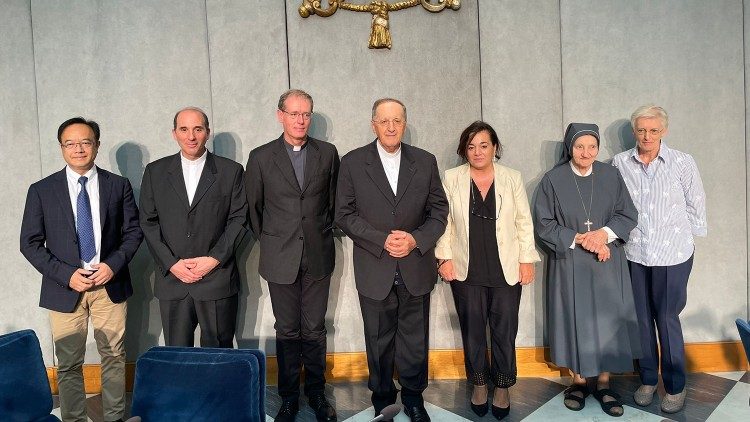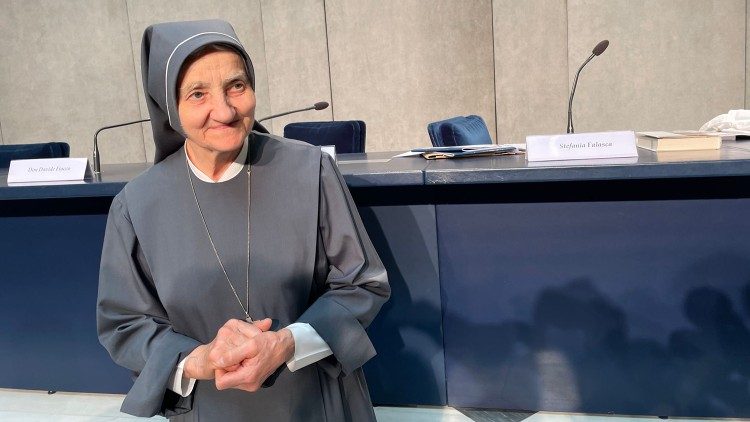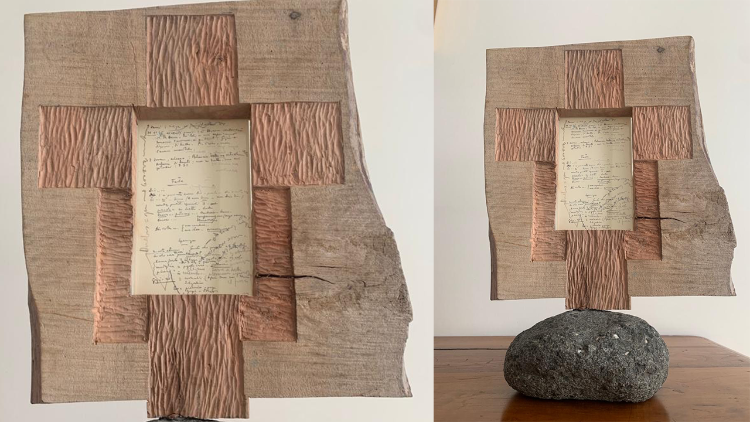In the Press Office they predict the presentation of the beatification of John Paul I that Pope Francis will celebrate on September 4 in Saint Peter’s Square. Together with the postulator, Cardinal Stella and the adjunct postulator Stefania Falasca, the memories of his niece Lina Petri and Sister Margherita Marin, the first to find the lifeless body of the Pontiff, and the testimony of Father Dabusti, the Brazilian priest who prayed for the healing of the girl miraculously cured by Luciani
Salvatore Cernuzio – Vatican City
He has gone down in history as the Pope of the 33 days of his pontificate, or more banally as the “Smiling Pope” or, worse still, as the protagonist of a noir legend of sudden death fueled by books and newspapers. The imminent beatification helps to know better and also to discover the immense figure of John Paul I. The magisterium, the spiritual and human depth, the patristic, moral, historical and dogmatic culture.
The cause of canonization and personal memories
A precious opportunity to deepen, in view of the celebration that Pope Francis will preside over in Saint Peter’s Square on September 4, was the press conference this morning in the Vatican Press Room. Present the actors of the cause of canonization, the postulator, Cardinal Beniamino Stella and the vice-postulator Stefania Falasca. On his part, not only an excursus of the cause of canonization, which lasted 19 years, but also memories and personal experiences. For example, Stella reminds his mother that “in relation to poverty he used to quote Monsignor Luciani, to say that the priest should not have bank accounts or checkbooks.” Or the emotion of Falasca who, urged by the reporters, recounted the past decades, between studies and trips, delving into the figure of what she described as “one of the most brilliant Popes of the 20th century.”
Niece Lina: “He helped the Jews during the war”
In the wave of this almost intimate environment, unusual for a press conference, the testimonies of two women who knew Albino Luciani closely aroused great emotion in the room. Sister Margherita Marin, the nun of the Congregation of the Sisters of the Maria Niña, assistant in the papal department, who was the first, along with Sister Vincenza Taffarel, to find the lifeless body of the Pontiff. Next, the niece Lina Petri, daughter of Sister Antonia, who recalled the postcards from Rome “from her uncle”, the advice, the talks about Saint Augustine and Saint Thomas, the phone calls with her sister, like the one in which speaking of the meeting in Belluno between Hitler and Mussolini, he said in dialect: “We are in the hands of two madmen!” Lina Petri also recounted the help offered by her uncle to people in difficulty during the war, especially Jews, or the day the Bishops of Friuli asked her for advice on whether public Catholic funerals should be held for Pier Paolo Pasolini, assassinated in a “scandalous death”. “I authorized it right away, I had no doubts,” he confided to his niece, “I explained to him that we all need the mercy of the Lord. Pasolini in Friuli, as a teenager, was attached to the church and I put it as a base.” “He was like that … He didn’t make condemnatory judgments, but started from what was good in people.”
The deposition of Benedict XVI
The testimonies of the nun and her niece were some of the many that, in the course of the process, allowed piece by piece to reconstruct the work and life, including the last moments, of the Venetian Pontiff. Among the extra-procedural depositions, that of Benedict XVI stands out: a testimony, Stella pointed out, that represents “a historical unicum, since it is the first time that a Pope gives visu testimony about another Pope.”
A thorough and thorough investigation
The process, which has been promoted from the Brazilian Church to the Argentine Church, has advanced slowly, reaching the beatification phase 44 years after his death in 1978, which has been recorded in the collective memory as “the year of the three Popes “. However, it is precisely this slowness that has made it possible to carry out such meticulous work. “The cause of Pope Luciani”, the postulator stressed, “was not longer than others, nor shorter and easier than others. It has been an investigation without discounts: precise, conscientious, scrupulous, carried out with a historical-critical method, on the basis of a serious investigation of the archival sources, of a directed bibliographical search and of a rich testimonial panorama”.
The pontificate tip of an iceberg
And it is precisely the acquisition of the sources and of an impressive mass of documents, now compiled by the Vatican Foundation that bears the name of the Blessed Pope, which has allowed the “analytical excavation” thanks to which, Falasca said, “it has been been able to launch a historical reconstruction project that is not extemporaneous”. “At the level of historiographical interest,” underlined the vice-postulator and vice-president of the Vatican Foundation Papa Luciani, “John Paul I has had a modest space. His work, his personality and his thought have received little attention.” The cause of canonization has therefore provided “a service to historical truth, acquiring all the documentation to really speak of John Paul I”. And above all “to fully reconstruct an itinerary of which the pontificate was the tip of an iceberg”.
The little mountain parish
In fact, Luciani’s holiness has distant roots, which go back to Canale d’Agordo, the small town in Veneto where he was born. “Despite many comments, which have too often extolled the humility and provincialism of the hometown”, observed Don Davide Fiocco, a member of the Foundation and director of the “Centro Papa Luciani” house of spirituality, “historical research They speak of the vitality of a borderland, which was the seat of economic and social initiatives that boasted birthright even at the national level and, above all, was the forger of personalities of some importance”. It is no coincidence that during the Second Vatican Council (perhaps a unique case in the world) this small mountain parish had up to three prelates, in addition to Monsignor Luciani, among the Council Fathers.
lies about death
Thanks to scientific research, then, it has been possible to dismantle the false news about death by poisoning that “lasted for a long time.” A historical lie that, for Stefania Falasca, “has engulfed the consistency and masterly caliber of this man and this Pope for so many years.” “It’s incredible that 44 years after his death we still wonder why he was killed,” the journalist exclaimed. To counteract what she described as “advertising rubbish” are, precisely, the sources: “And when there are sources, the story speaks truth.”
Medical records and reports
In the case of Luciani’s death, there is talk of the acquisition of medical records, procedural statements, medical reports, the reports of the doctors – the pontifical archatrist Mario Fontana and the doctor Renato Buzzonetti – who had drawn up the cause and the clinical status , the anamnesis, the file and ordered the conservation of the corpse. “Some people wonder why an autopsy was not carried out. There was no law then, John Paul II introduced it in 1983. In addition, the autopsy was requested on suspicion and Fontana and Buzzonetti, in the death report, wrote that there was no they considered it necessary,” Falasca said. The sight of the corpse, the description of the stains that allowed the time of death to be reestablished, led the two professionals to decree Luciani’s as “sudden death.” And “when it is written like that in forensic medicine, it is always a natural death,” the journalist stresses: “It was a heart attack.
Luciani himself, who was in “good health despite some medical history,” had seen signs of it the night before, with chest pain he mistook for intercostal pain. He did not give it too much importance and went to bed saying goodbye to the nuns like every night and telling Sister Margherita his last sentence: “Tomorrow we will see each other, if the Lord still wants, and we will celebrate mass together”.
Memories of Sister Margherita Marin
The nun evoked these strong memories in a soft voice, along with small but significant anecdotes that bring back the image of the man Albino Luciani. For example, that time in the afternoon, when seeing the nun ironing, the Pope, who was going from one place to another with papers in his hand, told her: “Sister, I make you work so hard… But don’t iron so well the shirt because it’s hot, I sweat and I have to change it often. Iron only the collar and cuffs, the rest you can’t see”.
The relic: a yellowed sheet of paper with notes on the theological virtues
Papers in hand, Juan Pablo I, always had them. Always. A sheet of paper was even in his hands when he died: notes on the virtue of prudence at the center of the catechesis of the general audience the following Wednesday. In the Foundation’s archives -which cover a period of time that goes from 1929 to 1978- diaries, notebooks, notes, transcripts have been recovered that show how everything Luciani said “was never left to improvisation”. From this “sanctum sanctorum” was extracted the relic that will be presented to the pope on Sunday: not a bone fragment or body part, as was always the case, but a piece of paper. A white sheet, yellowed by time, about ten centimeters thick, on which the Pope drew a scheme of spiritual reflection on the three theological virtues that recalls the magisterium of the general audiences. An absolute novelty, full of meaning: “It is the emblem of his whole spirituality and his search for the seven lamps of sanctification”, said Stefania Falasca, “the program of his pontificate”.
The portrait of a Chinese artist
In Saint Peter’s Square -during the ceremony, which can be attended by reserving tickets at the Prefecture of the Papal Household- the portrait painted by the Chinese artist Yan Zhang will be unveiled, whose creation was shown in an evocative video by the journalist Teresa Tseng. The film was screened at the Vatican Press Office, along with a video sent from Buenos Aires by the girl who received the miracle, Candela Giarda, and her mother Roxana Sosa, who were unable to come to Rome due to a broken leg young man.
Dabusti: “The Holy Spirit suggested that I pray for the sick girl”
The story of the young woman, suffering from malignant refractory epilepsy, and of the miraculous cure was told by Father Juan José Dabusti, the Argentine priest who, faced with the desperation of the mother who had called him to her daughter’s bedside after the doctors told him that he would not spend the night, he suggested that they pray together to Pope Luciani. “Seeing her in that state, I was encouraged to go to John Paul I to ask him for the recovery of her daughter, and together with her and some nurses present, I prayed to her,” the priest said. “Until that moment, I had never prayed to John Paul I for a cure. Why did I propose to Roxana that she pray there so that Luciani would intercede for Candela’s cure? I don’t know. It was the Holy Spirit.”
Pope Luciani: “A beatification without discounts” – Vatican News



